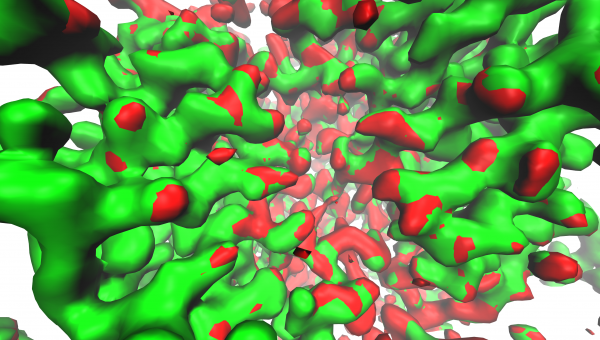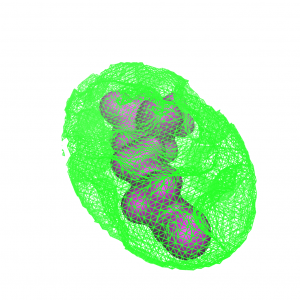
Macromolecular Quantum Chemistry ADMA software
999,99 €
The Adjustable Density Matrix Assembler (ADMA) package is used to perform quantum mechanical calculations on large molecules, to determine chemical properties, such as energy, electron density and electrostatic potential.
Molecular design: a vast field where’s always possible to bring something new, to add to the field of science, to complement some missing detail. Our analysis and builder software aims to add to a very unique field of molecular discovery and analysis through shape-based methods. In our opinion it is justified to start building a software kit to accomplish novel discoveries and add to the Romanian science community.
ADMA is molecular design modeling software planned to be available for Microsoft Windows and Linux. A state-of-the-art molecular builder and visualizer enables the researcher to import experimental structures using a variety of industry standard formats (Gaussian, GAMESS, etc), or to build novel protein structures using a multi-function tool palette.
ADMA uses the already calculated density matrices to build upon and therefore highly depends on the accuracy of these geometries, except when the protein is built from fragments which are located in its own database. Among other properties, its architecture allows the calculation of toxicological assessments and pharmacological properties.
ADMA (Adjustable Density Matrix Assembler) package for users who do not want to purchase the full package or individual modules, an alternative is desired to be possible via a web interface, through which anyone could start jobs on our own computer clusters, using any of our own software packages.
ADMA will have the unique ability to apply a wide range of computational models, to calculate a wide range of molecular systems, from organic molecules, to inorganics, polymers, materials systems (metals, oxides, ceramics, semiconductors), and whole proteins.
Tools available to the researchers for analyzing molecular structure and properties include the following:
- Enzymatic complementarity for drug design
- Determination of low energy conformations: employing the Lowdin-transform
- Nanomaterial structure analysis and design
- Pharmacological and toxicological assessment – QShAR
- 3D-visualization of electronic surfaces, electron densities, and electrostatic surfaces.
- Visualization of experimental crystal and protein structures.
- X-ray diffraction result improvement
- Building of complete proteins via computationally advantageous ways
- Correlating molecular shape with some chemical of physical property
REFERENCES
1 * Fragmentation Methods: A Route to Accurate Calculations on Large Systems, Mark S. Gordon et al, Chem. Rev. 2012, 112, 632–672
2 ** Large-Scale Computations in Chemistry: A Bird’s Eye View of a Vibrant Field, Alexey V. Akimov, Oleg V. Prezhdo, Chem. Rev. 2015, 115, 5797−5890
3 *** Fragment Quantum Mechanical Calculation of Proteins and Its Applications, Xiao He et al, Acc. Chem. Res. 2014, 47, 2748−2757
4 **** Fuzzy electron density fragments in macromolecular quantum chemistry, combinatorial quantum chemistry, functional group analysis, and shape−activity relations, Paul G. Mezey, Acc. Chem. Res. 2014, 47, 2821−2827
Only logged in customers who have purchased this product may leave a review.
Related Products
-
Molecular Shape Analysis software
999,99 €The Shape Group Method produces a molecule specific shape matrix, based on topological properties of the electron density isosurfaces, for multiple reference curvature values.



Reviews
There are no reviews yet.